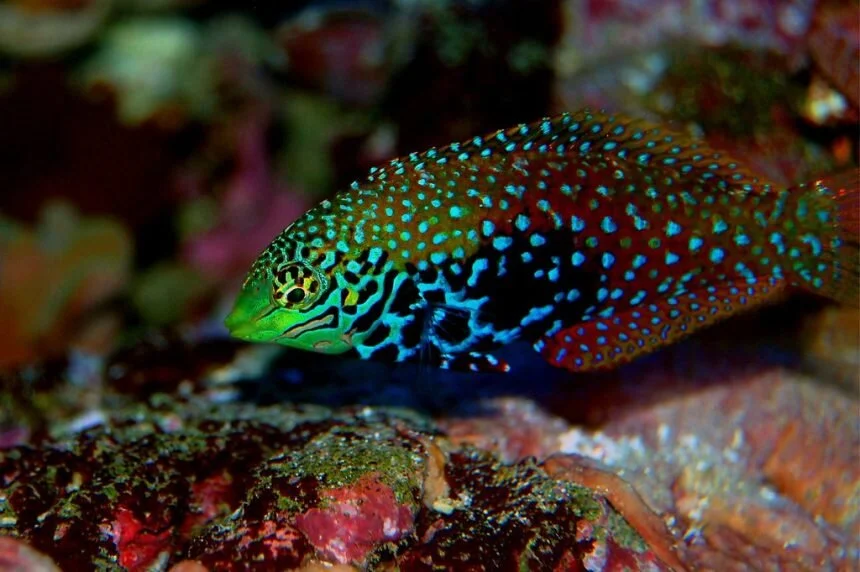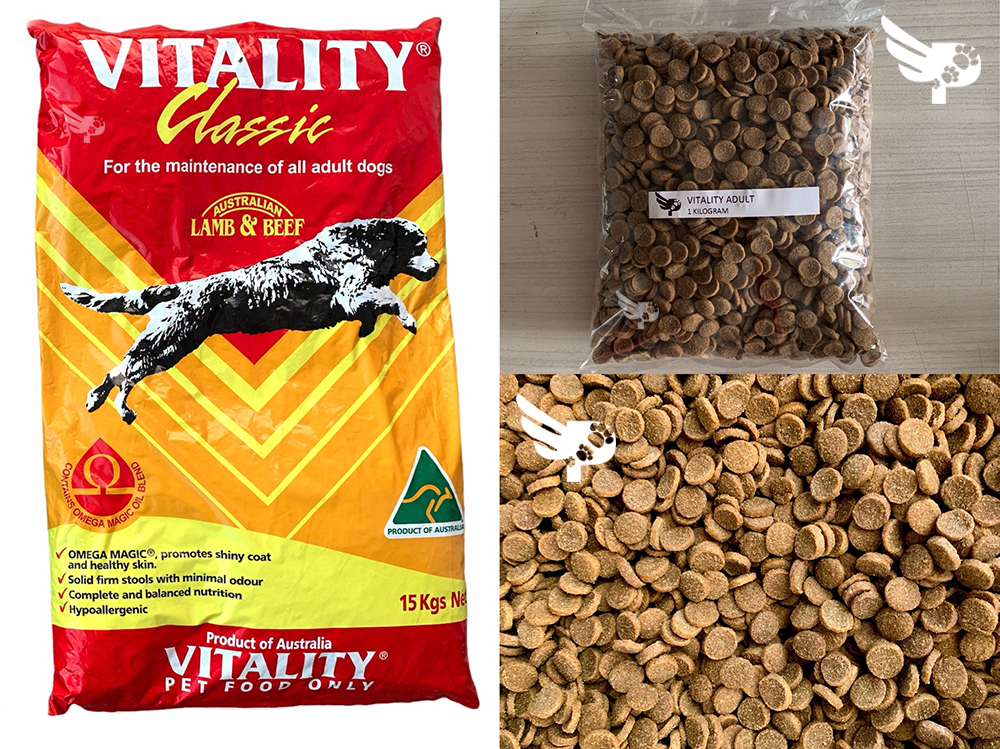Peacock wrasses are colorful and beautiful fish in the Indo-Pacific vicinity. They are recognized for their intricate markings and their capability to trade color. Peacock wrasses are a vital part of the marine ecosystem, and they are also famous aquarium fish.
What is a Peacock Wrasse?

A saltwater fish found in the Indo-Pacific is called a peacock wrasse. It belongs to the Labridae family, including parrotfish, wrasses, and groupers. Known for their vibrant and intricate patterns, peacock wrasses use them to attract friends and defend their territory.
The scientific name for the peacock wrasse is Macropharyngodon. There are over one hundred species of peacock wrasses, every with a unique coloration pattern. Some of the most not unusual species consist of the:
Blue-streaked Peacock Wrasse (Macropharyngodon Meleagris)

Macropharyngodon meleagris, the black-spotted wrasse, jap leopard wrasse, or reticulated wrasse, is a species of ray-finned fish from the family Labridae, the wrasses. This species is local to the east Indian Ocean and the Pacific Ocean. It lives on coral reefs at depths of from the surface to 30 meters.
Divided Peacock Wrasse (Macropharyngodon Bipartitus)

Macropharyngodon Bipartitus, additionally known as the split peacock wrasse, vermiculite wrasse, or blue celebrity leopard wrasse, is a species of ray-finned fish from the circle of relatives Labridae, the wrasses. It is observed within the Western Indian Ocean, from the coast of East Africa to the Maldives.
Lyretail Peacock Wrasse (Macropharyngodon Guentheri)

Macropharyngodon Guentheri, additionally known as the Guenther’s wrasse or lyretail peacock wrasse, is a ray-finned fish from the own family Labridae, the wrasses. It is observed within the Western Pacific Ocean, from Indonesia to the Philippines.
Six-spot Peacock Wrasse (Macropharyngodon Sexstriatus)

The six-spot peacock wrasse (Macropharyngodon sexstriatus), additionally called the six-bar wrasse or six-line wrasse, is a species of ray-finned fish from the family Labridae, the wrasses. It is discovered within the Indo-Pacific, from East Africa to the Tuamotu Archipelago.
Where do they live?
Peacock wrasses are found in the Indo-Pacific, from East Africa to the Tuamotu Archipelago. They are typically located on coral reefs but can also be determined in seagrass beds and different shallow marine habitats.
Some specific locations where peacock wrasses can be found include:
- The Great Barrier Reef
- The Red Sea
- The Maldives
- The Seychelles
- The Philippines
- Indonesia
- Australia
- Japan
- Hawaii
Peacock wrasses are discovered in diverse depths, from the surface to depths of 30 meters. They are extraordinary in shallower waters but can also be determined at deeper depths.
The habitat of peacock wrasses is crucial for his or her survival. They need coral reefs and marine habitats to offer them food, shelter, and spawning grounds.
The loss of coral reefs due to weather alternating and overfishing is a primary danger to peacock wrasses. It is crucial to shield these habitats so that peacock wrasses can preserve to thrive.
What do they look like?
Peacock wrasses are recognized for their colorful and problematic markings. They usually are small fish, ranging from 5 to 15 centimeters. However, a few species can develop up to 35 centimeters long.
The colorations of peacock wrasses can range greatly, but they regularly integrate blue, green, yellow, and orange. Some species additionally have stripes, spots, or different markings.
Behavior
Peacock wrasses are known for their colorful and complex markings and thrilling creatures with various behaviors.
Here are some of the most common behaviors of peacock wrasses:

Feeding: Peacock wrasses are omnivorous fish and devour a variety of organisms, together with algae, invertebrates, and small fish. They are usually discovered in the water column but may even forage on the lowest of the reef.

Courtship: Peacock wrasses are regarded for their problematic courtship displays. The men regularly swim around the girls, displaying their brilliant colorings and fins. They may additionally construct nests or create different shows to draw pals.

Nesting: Peacock wrasses are oviparous fish, which means that they lay eggs. The eggs are fertilized by the adult males and hatch into larvae. The larvae waft inside the water column until they are antique sufficient to settle on the reef.

Parental care: The males of a few peacock wrasse species will guard the eggs and young fish. They will fan the eggs to hold them oxygenated and protect them from predators.

Territorial conduct: Peacock wrasses are recognized to be territorial fish. They will protect their territory from other fish, mainly different men. This conduct is frequently followed through displays of aggression, including flaring their fins or showing their enamel.

Social conduct: Peacock wrasses are commonly solitary fish but are occasionally acquired in small companies. These companies are frequently made up of women and men or of juveniles.
Peacock wrasses’ behavior can range depending on the species and the man or woman fish. However, these are some of the maximum commonplace behaviors discovered in these captivating creatures.










